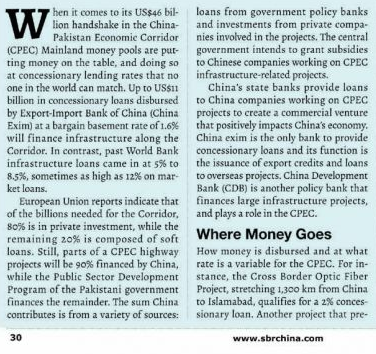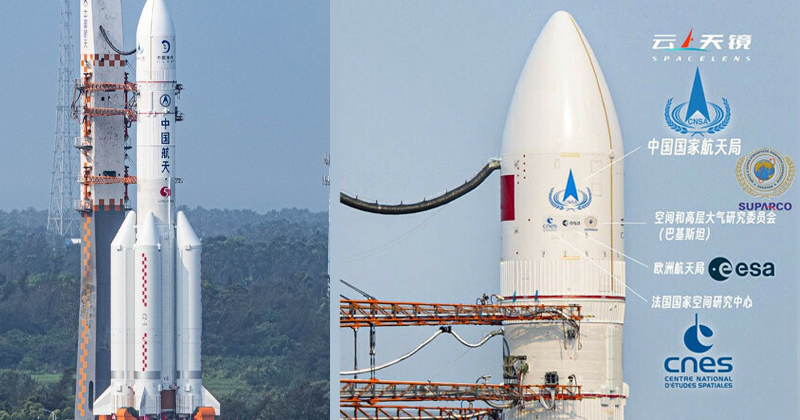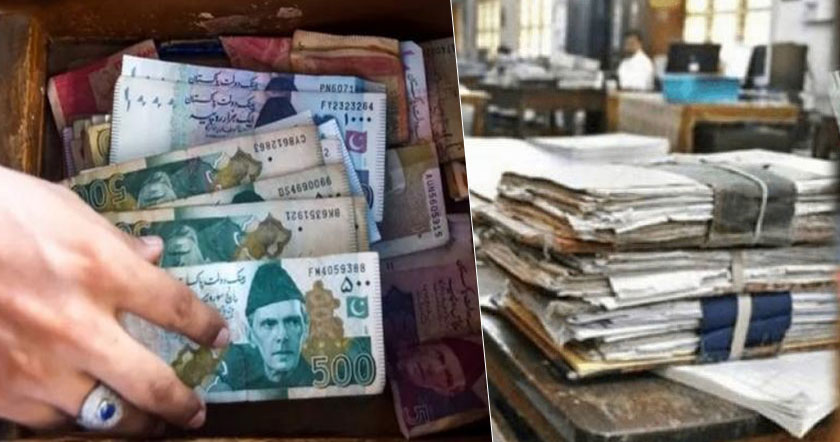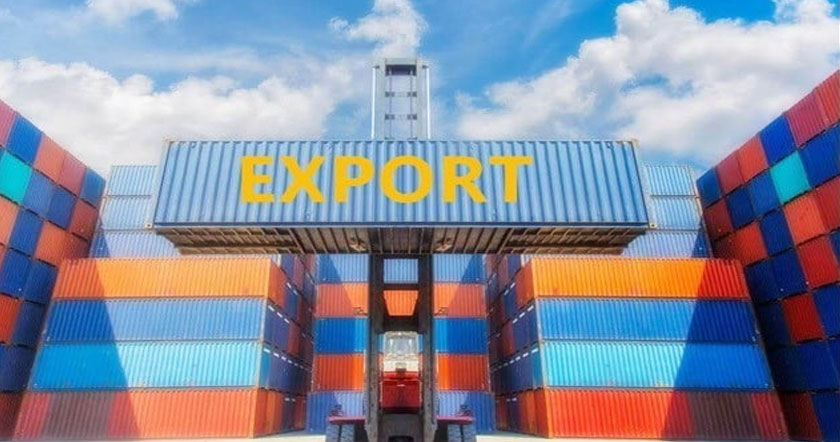An unrelenting campaign of fear, uncertainty and doubt (FUD) about China-Pakistan Economic Corridor (CPEC) has been unleashed in the media in recent weeks. This strategy harkens back to the aggressive marketing techniques used by the American computer giant IBM in the 1970s to fight competition.
Fear, Uncertainty and Doubt (FUD):
A definition of FUD that captures its essence is offered by Roger Irwin as follows: "Unable to respond with hard facts, scare-mongering is used via 'gossip channels' to cast a shadow of doubt over the competitors offerings and make people think twice before using it".
A number of articles in western and Indian media have attempted to use FUD against China-Pakistan Economic Corridor. Some Pakistani journalists and commentators, some unwittingly, have also joined in the campaign. As expected, these detractors ignore volumes of data and evidence that clearly contradict their claims.
Part of the motivation of those engaged in FUD against CPEC appears to be to check China's rise and Pakistan's rise with its friend and neighbor to the north. Their aim is to preserve and protect the current world order created by the Western Powers led by the United States at the end of the second world war.
Growing Infrastructure Gap:
Development of infrastructure is essential for economic and social development of a country such as Pakistan. China-Pakistan Economic Corridor financing needs to be seen in the context of the large and growing infrastructure gap in Asia that threatens social and economic progress.
Rich countries generally raise funds for infrastructure projects by selling bonds while most developing countries rely on loans from international financial institutions such as the World Bank and the Asian Development Bank to finance infrastructure projects.
The infrastructure financing needs of the developing countries far exceed the capacity of the World Bank and the regional development banks such as ADB to fund such projects. A recent report by the Asian Development Bank warned that there is currently $1.7 trillion infrastructure gap that threatens growth in Asia. The 45 countries surveyed in the ADB report, which covers 2016-2030, are forecast to need investment of $26 trillion over 15 years to maintain growth, cut poverty and deal with climate change.

Chinese CPEC Loans to Pakistan:
About 80% of the $55 billion of the Chinese money for CPEC is private investment while the rest is composed of soft loans to the government, according to Shanghai Business Review.
The Chinese soft loans for CPEC infrastructure projects carry an interest rate of just 1.6%, far lower than similar loans offered by the World Bank at rates of 3.8% or higher.
Chinese companies investing in Pakistan are getting loans from China's ExIm Bank at concessional rates and from China Development Bank at commercial rates. These loans will be repaid by the Chinese companies from their income from these investments, not by Pakistani taxpayers.
Rising Confidence in Pakistan:
Pakistani economy is already beginning to reap the benefits of the current and expected investments as seen in the 5.2% GDP growth in the current fiscal year, the highest in 9 years.
The World Bank's Pakistan Development Update of May 2017 says that "Pakistan’s economy continues to grow strongly, emerging as one of the top performers in South Asia".
Rapidly expanding middle class and rising demand for consumer durables like vehicles and home appliances attest to the positive impact of CPEC. Consumer confidence in Pakistan has reached its highest level since 2008, according to Nielsen.
US-based consulting firm Deloitte and Touche estimates that China-Pakistan Economic Corridor (CPEC) projects will create some 700,000 direct jobs during the period 2015–2030 and raise its GDP growth rate to 7.5%, adding 2.5 percentage points to the country's current GDP growth rate of 5%.
Countering FUD:
Pakistani government should respond to the FUD campaign against CPEC by countering it with facts and data and increasing transparency in how CPEC projects are being financed, contracted and managed. It is particularly important in a low-trust society like Pakistan's where people can be easily persuaded to believe the worst about their leaders and institutions.
Summary:
An unrelenting campaign of fear, uncertainty and doubt (FUD) about China-Pakistan Economic Corridor (CPEC) has been unleashed in the media in recent weeks. This strategy harkens back to the aggressive marketing techniques used by the American computer giant IBM in the 1970s to fight competition. Part of the motivation of those engaged in FUD against CPEC appears to be to check China's rise and Pakistan's rise with its friend and neighbor to the north. Their aim is to preserve and protect the current world order created by the Western Powers led by the United States at the end of the second world war. Pakistani government should respond to the FUD campaign against CPEC by countering it with facts and data and increasing transparency in how CPEC projects are being financed, contracted and managed.
http://www.riazhaq.com/2017/05/campaign-of-fear-uncertainty-and-doubt.html
Fear, Uncertainty and Doubt (FUD):
A definition of FUD that captures its essence is offered by Roger Irwin as follows: "Unable to respond with hard facts, scare-mongering is used via 'gossip channels' to cast a shadow of doubt over the competitors offerings and make people think twice before using it".
A number of articles in western and Indian media have attempted to use FUD against China-Pakistan Economic Corridor. Some Pakistani journalists and commentators, some unwittingly, have also joined in the campaign. As expected, these detractors ignore volumes of data and evidence that clearly contradict their claims.
Part of the motivation of those engaged in FUD against CPEC appears to be to check China's rise and Pakistan's rise with its friend and neighbor to the north. Their aim is to preserve and protect the current world order created by the Western Powers led by the United States at the end of the second world war.
Growing Infrastructure Gap:
Development of infrastructure is essential for economic and social development of a country such as Pakistan. China-Pakistan Economic Corridor financing needs to be seen in the context of the large and growing infrastructure gap in Asia that threatens social and economic progress.
Rich countries generally raise funds for infrastructure projects by selling bonds while most developing countries rely on loans from international financial institutions such as the World Bank and the Asian Development Bank to finance infrastructure projects.
The infrastructure financing needs of the developing countries far exceed the capacity of the World Bank and the regional development banks such as ADB to fund such projects. A recent report by the Asian Development Bank warned that there is currently $1.7 trillion infrastructure gap that threatens growth in Asia. The 45 countries surveyed in the ADB report, which covers 2016-2030, are forecast to need investment of $26 trillion over 15 years to maintain growth, cut poverty and deal with climate change.

Chinese CPEC Loans to Pakistan:
About 80% of the $55 billion of the Chinese money for CPEC is private investment while the rest is composed of soft loans to the government, according to Shanghai Business Review.
The Chinese soft loans for CPEC infrastructure projects carry an interest rate of just 1.6%, far lower than similar loans offered by the World Bank at rates of 3.8% or higher.
Chinese companies investing in Pakistan are getting loans from China's ExIm Bank at concessional rates and from China Development Bank at commercial rates. These loans will be repaid by the Chinese companies from their income from these investments, not by Pakistani taxpayers.
Rising Confidence in Pakistan:
Pakistani economy is already beginning to reap the benefits of the current and expected investments as seen in the 5.2% GDP growth in the current fiscal year, the highest in 9 years.
The World Bank's Pakistan Development Update of May 2017 says that "Pakistan’s economy continues to grow strongly, emerging as one of the top performers in South Asia".
Rapidly expanding middle class and rising demand for consumer durables like vehicles and home appliances attest to the positive impact of CPEC. Consumer confidence in Pakistan has reached its highest level since 2008, according to Nielsen.
US-based consulting firm Deloitte and Touche estimates that China-Pakistan Economic Corridor (CPEC) projects will create some 700,000 direct jobs during the period 2015–2030 and raise its GDP growth rate to 7.5%, adding 2.5 percentage points to the country's current GDP growth rate of 5%.
Countering FUD:
Pakistani government should respond to the FUD campaign against CPEC by countering it with facts and data and increasing transparency in how CPEC projects are being financed, contracted and managed. It is particularly important in a low-trust society like Pakistan's where people can be easily persuaded to believe the worst about their leaders and institutions.
Summary:
An unrelenting campaign of fear, uncertainty and doubt (FUD) about China-Pakistan Economic Corridor (CPEC) has been unleashed in the media in recent weeks. This strategy harkens back to the aggressive marketing techniques used by the American computer giant IBM in the 1970s to fight competition. Part of the motivation of those engaged in FUD against CPEC appears to be to check China's rise and Pakistan's rise with its friend and neighbor to the north. Their aim is to preserve and protect the current world order created by the Western Powers led by the United States at the end of the second world war. Pakistani government should respond to the FUD campaign against CPEC by countering it with facts and data and increasing transparency in how CPEC projects are being financed, contracted and managed.
http://www.riazhaq.com/2017/05/campaign-of-fear-uncertainty-and-doubt.html






























